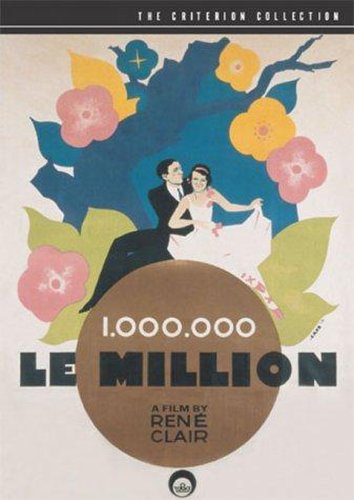

When two starving artists learn their lottery ticket has won, the race is on, but — where's the ticket? Although as of today, this film is 82 years old, it is still one of the most watchable and enjoyable films I've seen.
Saw 'Le Million' for four main reasons. Firstly, the premise was really appetising.
I found out about this French film because it was in the book 1001 Movies You Must See Before You Die, it sounded like it could be good from the description, so I looked forward to it, directed by René Clair (À Nous la Liberté). Basically, in Paris, Michel Bouflette (René Lefèvre) is a debt-ridden artist with various debts from hounding creditors.
It begins with a wondrous swoop of the camera over the rooftops of Paris, at night. A man climbs a ladder and peeks into a lit skylight.
A truly great film, unlike anything you've ever seen. Hilarious, complicated, delightful and a musical.
Though I've never been particularly enamoured of Rene Clair the opening sequence of this early Sound film makes it easy to see what he attracted so much admiration. He allows his camera to swoop over the rooftops of Paris albeit the roofs are on a sound stage rather than in real Parisian streets; the tracking shot lasts for close to a minute before coming to a halt at an open skylight where two men are peering down into a scene of revelry below.
"Le Million" is a 1931 musical directed by Rene Clair. It's wonderful that it's available on DVD for audiences to see and enjoy it.
The story is enjoyable fluff, zipping past in a droll flurry of conniving, gaffe, hysterical chase, mistaken identity, public dishonesty, false appearances, and social hypocrisy around money. A snotty starving artist who owes everyone wins the lottery but his fateful jacket upstairs is missing and makes its round of Paris.
There are two ways to rate a movie, in a passive way, or transport yourself to the period when it was made and then see, whether it had some added value over the other movies of its genre? These added values, which we of today may conveniently overlook, were the mile stones through which the art (and science) of movies progressed.